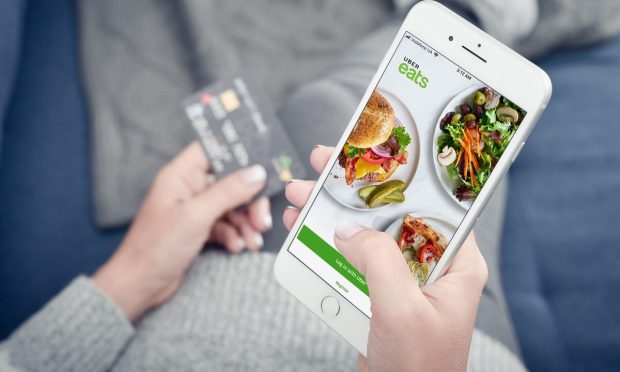Aggregators Compete to Offer Most Frictionless, Flexible Payment Experience

At the core of restaurant aggregators’ value proposition for consumers is the instant, on-demand convenience they offer, promising to provide what customers want, when they want it. As such, to maximize value, aggregators must provide the most seamless and flexible experience.
Uber Eats, for its part, announced a range of group ordering features Wednesday (March 9), including bill splitting, checkout deadlines, and automatic reminders to get orders in before said deadlines.
Read more: Uber Unveils Bill Splitting, Other Group Dining Features
“We know that Uber Eats consumers love bringing people together,” the company said in the announcement. “We also know that they don’t like the financial responsibility of ordering for everyone. Now, for the first-time ever on a delivery app, anyone can create a group and allow individuals to order from the same restaurant and pay for whatever they’d like.”
The news demonstrates Uber’s ability to apply the learnings from one part of its diversified platform to another. As far back as 2013, the company announced a fare-splitting feature for its ride-hailing customers, making it easier for consumers to split the cost of the trip.
In the past two years, there has been a widespread shift to eating restaurant meals at home, such that even group occasions that may once have been celebrated in a restaurant’s dining room are now more likely than in previous years to be enjoyed from the comfort of one’s couch.
By early 2021, consumers were already purchasing significantly more restaurant meals for home consumption than for dine-in, according to research from PYMNTS’ study “The Bring-It-to-Me Economy: How Online Marketplaces and Aggregators Drive Omnichannel Commerce,” which was created in collaboration with Carat from Fiserv. The report, which drew from a census-balanced survey of over 5,200 U.S. adults, found that consumers were 31% more likely to order restaurant meals for pickup or delivery than they were to dine at a restaurant.
See more: Bring-It-to-Me Economy Ascends as Consumers Embrace Home-Centric Lifestyles
Uber Eats’ move comes as aggregators race to offer the most frictionless checkout experience. DoorDash, for instance, announced in late February that it is integrating its Storefront online ordering product with Order with Google, allowing consumers to order and pay through Search and Maps.
Read more: DoorDash Integrates With Google to Offer Frictionless Ordering, Payment
Indeed, consumers are increasingly coming to expect quick and intuitive payment options at checkout when purchasing restaurant meals.
“Consumers aren’t just constrained to food ordering for eCommerce,” Olo CEO Noah Glass told PYMNTS in an interview. “They’re also using platforms like Shop Pay. They’re also using Amazon.com. They’re used to having frictionless payment experiences. The status quo for ordering from restaurant brands’ sites, where the digital order provider is a gateway into a credit card processor really meant for in-restaurant card swipes that doesn’t have to operate in a consumer-facing layer … that’s no longer a good enough solution.”
See more: Removing Payment Friction Equips Restaurants to Compete With Aggregators
Findings from the December edition of PYMNTS’ Digital Divide report, “The Digital Divide: Delivery Service Aggregators and the Digital Shift,” created in collaboration with Paytronix, revealed that 42% of all consumers had used a restaurant aggregator in the previous 18 months. Specifically, the study, which drew from a survey of a census-balanced panel of more than 2,500 U.S. consumers, found that 54% of those aggregator users had used DoorDash, 52% had used Uber Eats and 38% had used Gruhbub.
Read more: Restaurants Must Sharpen Digital Tools to Match Convenience of Delivery Aggregators
